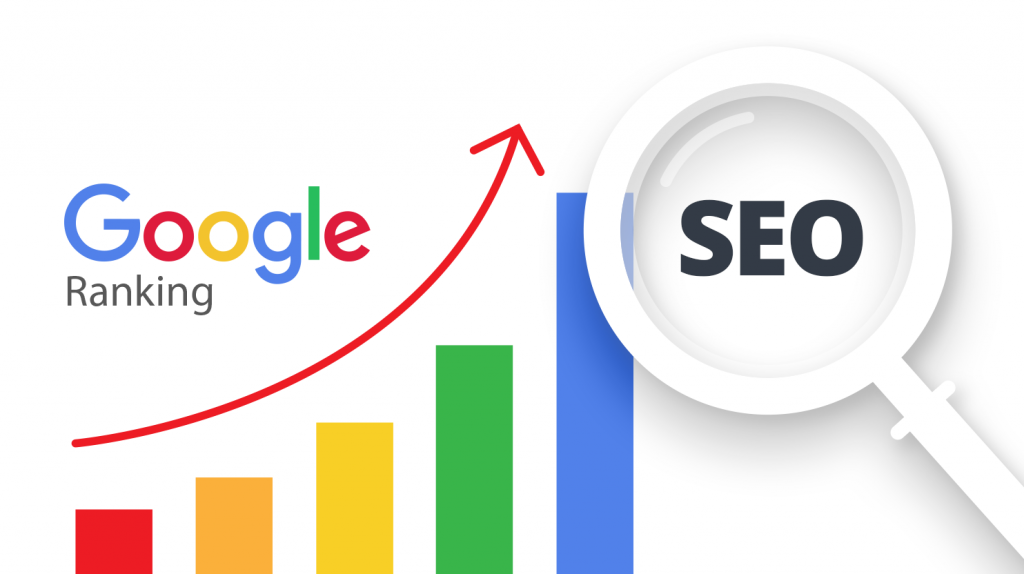Search Engine Optimization (SEO) is a crucial aspect of digital marketing that helps businesses improve their online visibility, attract more traffic, and generate leads. SEO is an ever-evolving field, and it can be challenging to keep up with the latest trends and algorithm updates. However, by implementing effective SEO strategies, businesses can achieve higher rankings on search engines, especially Google.
The first and most crucial SEO strategy is to conduct a comprehensive website audit. A website audit helps businesses identify any issues that may be negatively affecting their search engine rankings and provides insights into how to fix them. In the next section, we will discuss the importance of conducting a website audit and provide tips on how to do it effectively.
Strategy #1: Conduct a comprehensive website audit
Conducting a website audit is the first step in improving your website’s search engine rankings. A website audit involves reviewing your website’s technical setup, content, and backlink profile to identify any issues that may be holding it back from ranking higher on search engines like Google.
To conduct a website audit, you can use a variety of tools like Google Analytics, Google Search Console, and SEMrush. These tools can help you identify technical issues like broken links, crawl errors, and slow page load times. You can also use them to analyze your website’s content and backlink profile to identify opportunities for improvement.
Once you have identified the issues, you can begin to take action to fix them. This may involve optimizing your website’s content, fixing broken links, and improving your website’s page speed. By conducting a website audit and fixing any issues, you can improve your website’s search engine rankings and attract more traffic to your site.
Strategy #2: Conduct thorough keyword research
Keyword research is an essential part of SEO that involves identifying the search terms that people use to find information related to your business or industry. By understanding the keywords and phrases that people use to search for information online, you can optimize your website’s content and improve its chances of ranking higher on search engines like Google.
To conduct keyword research, you can use a variety of tools like Google Keyword Planner, SEMrush, Ahrefs, and Moz Keyword Explorer. These tools can help you identify high-volume, low-competition keywords that you can target in your website’s content.
Once you have identified the keywords that you want to target, you can begin to optimize your website’s content for those keywords. This may involve creating new pages or blog posts that target specific keywords, optimizing your existing content to include those keywords, and ensuring that your website’s metadata (such as title tags and meta descriptions) includes relevant keywords.
By conducting thorough keyword research and optimizing your website’s content for the keywords that your audience is searching for, you can improve your website’s search engine rankings and attract more traffic to your site.
Strategy #3: Optimize your website for mobile devices
Mobile devices have become the primary means of accessing the internet, and as such, optimizing your website for mobile devices is crucial for SEO. In fact, Google has made mobile-friendliness a ranking factor in its algorithm, which means that websites that are not optimized for mobile devices may not rank as well on search engines.
To optimize your website for mobile devices, you can use responsive design techniques, which ensure that your website looks and functions well on any device, regardless of its screen size. Responsive design involves using flexible grids, images, and layouts that adjust to the size of the device that the website is being viewed on.
In addition to using responsive design techniques, you should also optimize your website’s load times on mobile devices. This may involve compressing images and other large files, minimizing the use of scripts and plugins, and using caching techniques to speed up your website’s load times.
By optimizing your website for mobile devices, you can improve its user experience and make it easier for visitors to navigate and engage with your content. This can result in higher search engine rankings, more traffic, and better conversion rates.
Strategy #4: Build high-quality backlinks
Backlinks are one of the most important ranking factors in Google’s algorithm. Backlinks are links from other websites that point to your website, and they signal to search engines that your website is authoritative and trustworthy. However, not all backlinks are created equal, and building high-quality backlinks is crucial for SEO success.
To build high-quality backlinks, you can use a variety of techniques like guest blogging, broken link building, and resource page link building. Guest blogging involves writing blog posts for other websites in your industry, and including a link back to your website in your author bio. Broken link building involves finding broken links on other websites and suggesting that they replace the broken link with a link to your website. Resource page link building involves finding resource pages in your industry and suggesting that they add a link to your website as a valuable resource.
When building backlinks, it’s important to focus on quality over quantity. High-quality backlinks come from authoritative websites in your industry, and they are earned through valuable content and relationship-building. Spammy or low-quality backlinks can actually harm your website’s search engine rankings, so it’s important to be selective when building backlinks.
By building high-quality backlinks, you can improve your website’s authority and trustworthiness in the eyes of search engines, which can lead to higher search engine rankings and more traffic to your site.
Strategy #5: Optimize your website’s on-page elements
On-page optimization involves optimizing the elements on your website’s pages that are visible to users, as well as those that are hidden in the code. On-page optimization is an important part of SEO, as it helps search engines understand what your website is about and how it relates to specific search queries.
Some of the key on-page elements that you should optimize include:
- Title tags: The title tag is the text that appears at the top of a browser window or in the search engine results page (SERP) when someone searches for a particular keyword. It should be descriptive and include the target keyword.
- Meta descriptions: The meta description is a brief summary of the content on a web page. It should also include the target keyword and entice people to click through to your website.
- Headings: Headings (H1, H2, H3, etc.) are used to organize content on a web page. They should be descriptive and include relevant keywords.
- Content: Your website’s content should be high-quality, relevant, and optimized for the target keywords. It should also be engaging and informative, and provide value to your audience.
- Images: Images should be optimized for search engines by including relevant alt text and file names.
By optimizing your website’s on-page elements, you can improve its relevance and authority in the eyes of search engines, which can lead to higher search engine rankings and more traffic to your site.
Strategy #6: Focus on user experience
User experience (UX) is an important factor in SEO, as it affects how people interact with your website and how long they stay on it. Search engines like Google consider user experience signals like bounce rate, time on site, and pages per session when ranking websites.
To improve your website’s user experience, you can:
- Make your website easy to navigate: Your website should have a clear and intuitive navigation structure that makes it easy for users to find what they’re looking for.
- Improve your website’s load times: A fast-loading website is crucial for good user experience, as users are more likely to abandon slow-loading sites.
- Optimize your website for readability: Your website’s content should be easy to read and understand, with clear headings and paragraphs.
- Use multimedia: Including images, videos, and other multimedia can make your website more engaging and improve user experience.
- Make your website mobile-friendly: As we mentioned earlier, optimizing your website for mobile devices is crucial for SEO and user experience.
By focusing on user experience, you can improve the engagement and satisfaction of your website’s visitors, which can lead to better search engine rankings and more traffic to your site.
Strategy #7: Leverage social media
Social media can be a powerful tool for SEO, as it can help you build brand awareness, drive traffic to your website, and earn high-quality backlinks. By promoting your content on social media, you can attract more visitors to your site and increase its visibility on search engines.
To leverage social media for SEO, you can:
- Create social media profiles: Set up profiles on popular social media platforms like Facebook, Twitter, LinkedIn, and Instagram.
- Share your content: Share your blog posts, articles, and other content on your social media profiles to drive traffic to your website.
- Engage with your audience: Respond to comments and messages on your social media profiles, and engage with your audience to build relationships.
- Build relationships with influencers: Reach out to influencers in your industry and build relationships with them. They may be willing to share your content with their followers, which can lead to more traffic and backlinks.
- Monitor social media mentions: Keep track of mentions of your brand or website on social media, and respond to them promptly.
By leveraging social media for SEO, you can increase your website’s visibility and drive more traffic to your site, which can lead to higher search engine rankings and more customers.
Strategy #8: Focus on local SEO
If your business has a physical location or serves a specific geographic area, then local SEO is crucial for attracting local customers. Local SEO involves optimizing your website and online presence to rank for local search queries, such as “restaurants near me” or “plumbers in Atlanta.”
To focus on local SEO, you can:
- Claim your Google My Business listing: This is a free tool that allows you to manage your business information on Google, such as your address, phone number, and hours of operation.
- Optimize your website for local keywords: Include local keywords in your website’s content and meta tags.
- Get listed in local directories: Submit your business information to local directories like Yelp, Yellow Pages, and Angie’s List.
- Get local backlinks: Earn backlinks from local websites, such as local news sites or chambers of commerce.
- Encourage customer reviews: Encourage your customers to leave reviews on your Google My Business listing and other review sites.
By focusing on local SEO, you can increase your visibility for local search queries, attract more local customers, and grow your business.
Strategy #9: Monitor and analyze your results
Finally, to ensure that your SEO strategies are working effectively, it’s important to monitor and analyze your website’s performance on search engines. This can help you identify areas where you need to improve and make data-driven decisions to optimize your website for better search engine rankings.
To monitor and analyze your SEO results, you can:
- Use Google Analytics: This is a free tool that allows you to track your website’s traffic, user behavior, and other important metrics.
- Set up Google Search Console: This is another free tool that allows you to monitor your website’s performance on Google search results and identify any technical issues that may be affecting your rankings.
- Monitor your keyword rankings: Use a keyword tracking tool to monitor your website’s rankings for important keywords and identify opportunities to improve.
- Analyze your backlink profile: Use a backlink analysis tool to monitor your website’s backlinks and identify any low-quality or spammy links that may be harming your rankings.
By monitoring and analyzing your website’s performance, you can make data-driven decisions to improve your SEO strategies and boost your website’s ranking on Google.
Strategy #10: Keep up-to-date with SEO trends and algorithm updates
SEO is constantly evolving, and it’s important to stay up-to-date with the latest trends and algorithm updates to ensure that your website is optimized for search engines. Search engines like Google regularly update their algorithms to provide users with the best possible search results, so staying on top of these updates is crucial for maintaining your website’s ranking.
To keep up-to-date with SEO trends and algorithm updates, you can:
- Follow industry blogs and publications: Keep up-to-date with the latest SEO news by following blogs and publications like Moz, Search Engine Land, and Search Engine Journal.
- Attend SEO conferences and webinars: Attend industry events and webinars to learn from experts in the field and stay on top of the latest trends.
- Experiment with new strategies: Try out new SEO strategies and tactics to see what works best for your website.
By keeping up-to-date with SEO trends and algorithm updates, you can ensure that your website is optimized for search engines and maintain your ranking on Google.
In conclusion, SEO is a crucial component of any successful online marketing strategy. By implementing the top 10 SEO strategies outlined in this article, you can improve your website’s ranking on Google and attract more traffic, leads, and sales to your business.
To recap, the top 10 SEO strategies are:
- Conduct keyword research
- Optimize your website structure and content
- Improve your website’s user experience
- Optimize for mobile devices
- Create high-quality content
- Build high-quality backlinks
- Use social media to promote your content
- Focus on local SEO
- Monitor and analyze your results
- Keep up-to-date with SEO trends and algorithm updates
Remember, SEO is an ongoing process, and it’s important to continually monitor and adjust your strategies to ensure that your website is optimized for search engines. By following these best practices and staying up-to-date with the latest SEO trends, you can achieve higher rankings on Google and drive more traffic, leads, and sales to your website.
Comments are closed.








